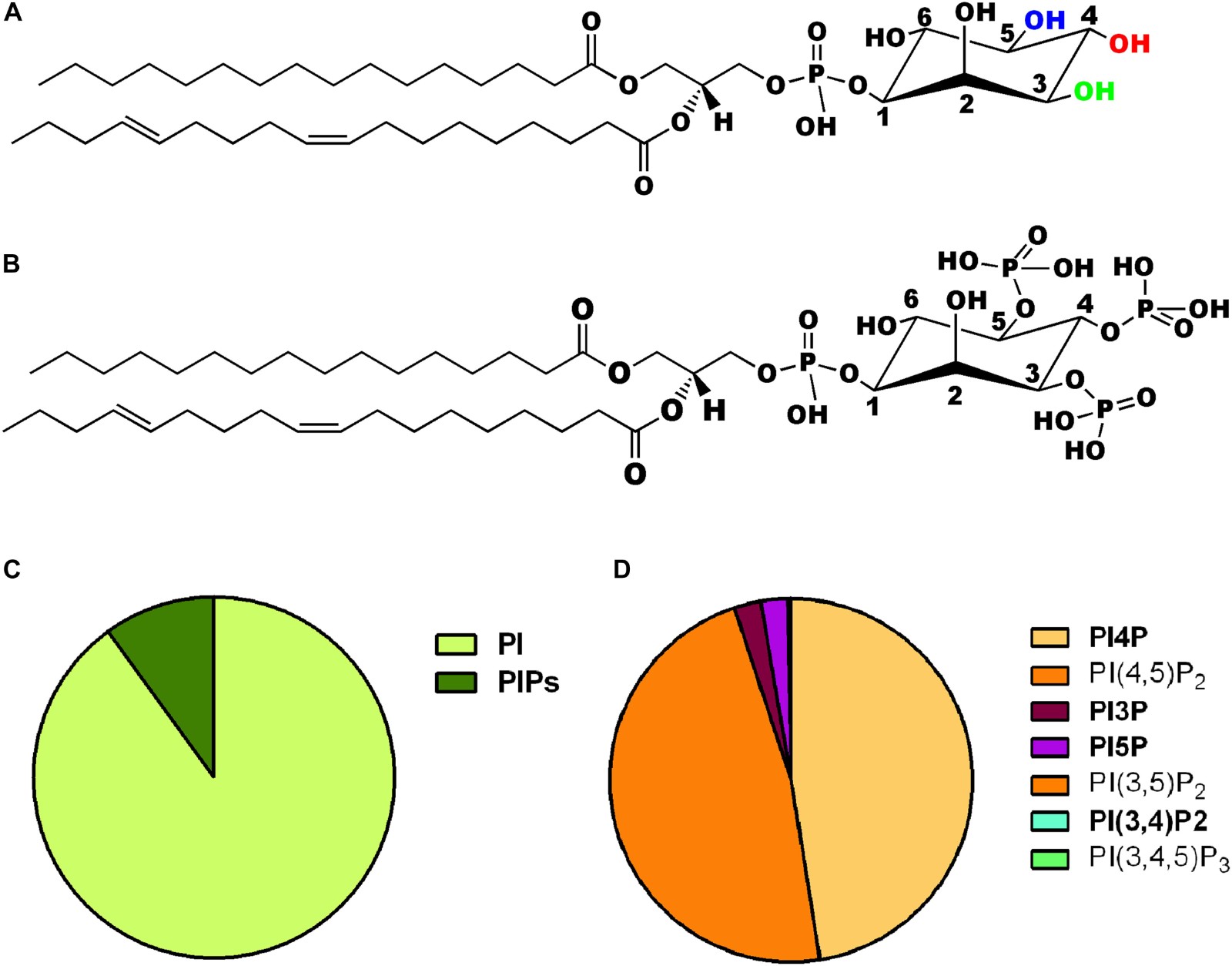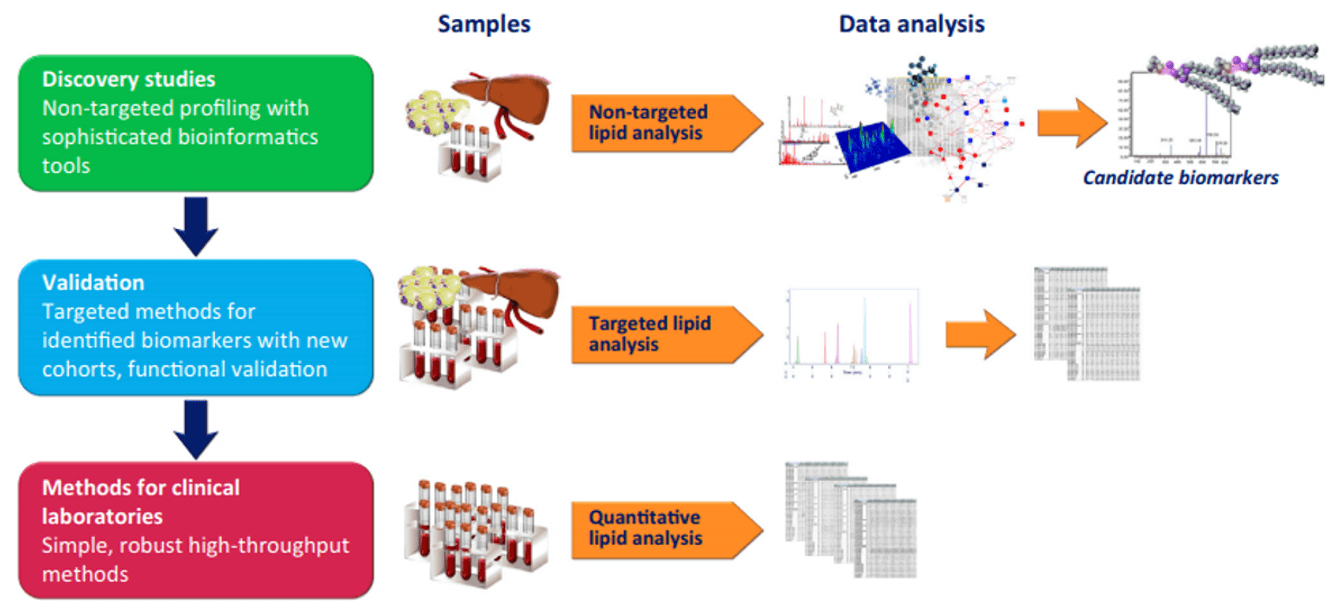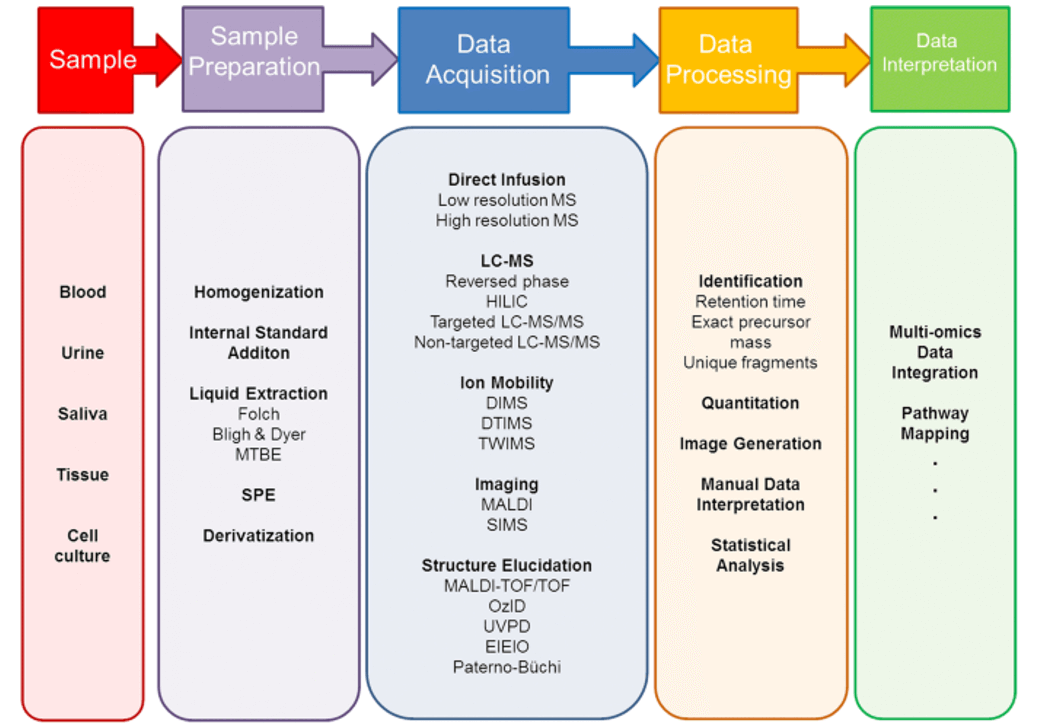Phosphoinositides Analysis Service
Phosphoinositides (PIPs) are phosphorylated derivatives of phosphatidylinositols (PI), which are key regulators of fundamental physiological processes such as cell growth, proliferation, and motility. PIPs are membrane-bound lipids that undergo dynamic phosphorylation and dephosphorylation at different positions on the inositol ring to generate multiple phosphorylated derivatives (e.g., PIP, PIP2, and PIP3) with different phosphate group positions. In addition, individual PIPs can contain different fatty acid chains, which leads to the complexity of their structures.
 Fig 1. Chemical structure and pie chart representing the relative abundance of phosphoinositides (Raghu P et al., 2019)
Fig 1. Chemical structure and pie chart representing the relative abundance of phosphoinositides (Raghu P et al., 2019)
Phosphoinositides function in a diverse array of cellular activities. They include a role as substrate for lipid kinases and phospholipases to generate second messengers, regulators of the cytoskeleton, of enzymes and of ion channels, and docking sites for reversible recruitment of proteins to membranes.
Phosphatidylinositol has a role in plant stress adaptation. In root hairs and pollen tubes, phosphatidylinositol controls the directed membrane transport required to deliver cell wall material and membrane area to the growing tip.
Creative Proteomics provides efficient and accurate solutions for the qualitative and quantitative determination of PIPs through advanced chromatography and mass spectrometry platforms, enabling accurate determination of total PIP, PIP2 and PIP3 as well as fatty acid composition.
Our Phosphoinositides Analysis Service
Absolute quantification: Use external standard method to quantify, and use internal standard for correction, qualitative and quantitative is more accurate.
High sensitivity: We use liquid chromatography coupled with triple quadrupole mass spectrometers for phosphoinositides analysis service (Triple Quad™ 6500 LC-MS/MS System).
 Fig 2. The workflow of phosphoinositides analysis service
Fig 2. The workflow of phosphoinositides analysis service
Sample Requirements
We routinely cover a rich variety of sample types, including cells, conditioned medium, subcellular compartments, exsome, tissue, blood, plasma, plant for our customer.
Solid tissue (typically 0.1–0.5 mg wet weight, initially frozen in liquid nitrogen) or cell suspensions (typically 105–106 cells).
Why Choose Us?
- Fast turnaround time: 1-4 weeks.
- High throughput: Only one injection can run both quantitative MRM and qualitative QTRAP scans to maximize throughput.
- One-stop analysis service: Provide comprehensive services from sample preparation, standard addition, mass spectrometry analysis, data processing, and data comparison.
- Detailed report: Experimental process, MS/MS instrument parameters, quality control parameters, raw data and the final result of the comparison.
- We will use our expertise to help you interpret the results and provide you with actionable recommendations on how to utilize these results in your research or business.
If you have any questions about our phosphoinositides detection service, please contact us.
References:
- Raghu P.; et al. Phosphoinositides: regulators of nervous system function in health and disease. Frontiers in Molecular Neuroscience. 2019, 12: 208.
- Kielkowska A.; et al. A new approach to measuring phosphoinositides in cells by mass spectrometry. Advances in Biological Regulation. 2014, 54: 131-141.
* Our services can only be used for research purposes and Not for clinical use.
Services:
Resource:
Platform:


 Fig 1. Chemical structure and pie chart representing the relative abundance of phosphoinositides (Raghu P et al., 2019)
Fig 1. Chemical structure and pie chart representing the relative abundance of phosphoinositides (Raghu P et al., 2019) Fig 2. The workflow of phosphoinositides analysis service
Fig 2. The workflow of phosphoinositides analysis service


